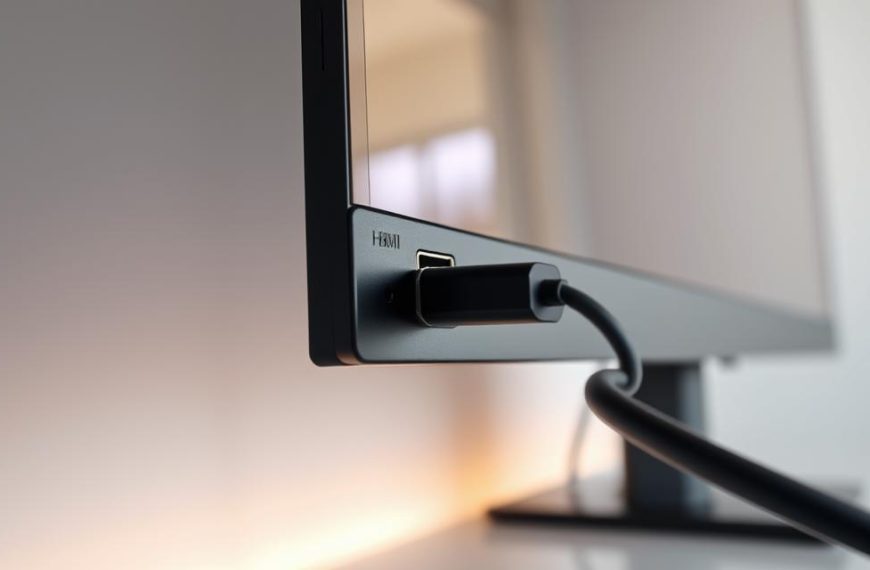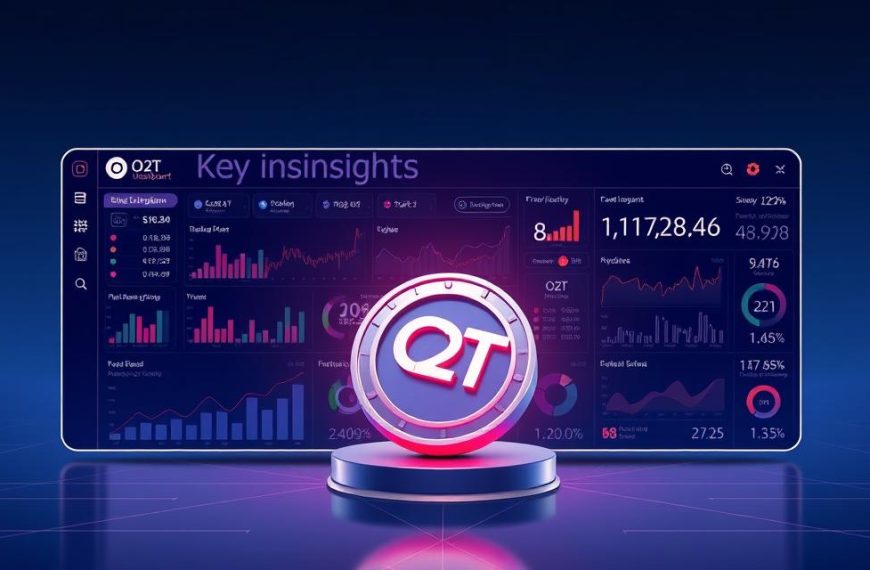Quick answer: tax outcomes hinge on who owns the destination address and whether a disposal has occurred for tax purposes.
If you move cryptocurrency between addresses you control, that transfer is generally non-taxable and need not be reported as a disposal on U.S. returns.
By contrast, if you transfer digital assets to someone else’s address, the act will often count as a disposal and may trigger capital gains or losses.
The IRS treats digital assets as property, so familiar rules apply: cost basis, holding period and price change matter when calculating tax.
Short-term gains are taxed at ordinary rates; long-term holdings can attract lower capital gains rates. Filers must also answer the digital asset question on federal forms and report dispositions where required.
This guide will help you spot non-taxable moves, work out basis and records to keep, and prepare for forms such as Form 8949 and Schedule D.
Quick answer: when is moving crypto taxable versus non-taxable?
The simple rule: if control stays with you, shifting funds across your own addresses normally creates no taxable disposal.
Non-taxable transfers: moving assets between wallets you own does not usually require reporting as a transaction on your US return. No gain or loss arises when beneficial ownership does not change.
Taxable events: several actions do create a reportable disposal. These include gifts, payments for goods or services, selling for fiat, or swapping one coin for another.
“A disposal occurs when you lose beneficial ownership; that triggers capital rules based on cost basis and holding period.”
- Rapid rule-of-thumb: internal moves are typically non-taxable because ownership stays the same.
- If you transfer units you do not control, the IRS treats that as a disposal and gains or losses may arise.
- The holding period starts the day after acquisition and ends on the day of disposal; this affects short‑term or long‑term capital treatment.
- Keep clear records and identify which lots you disposed of; that determines the gain calculation.
How the IRS treats digital assets in the United States
The IRS treats digital holdings as property, not currency. That means disposals can create capital gains or losses and some receipts are treated as ordinary income.
Digital assets as property:
- Each asset is a capital item; when you dispose of an asset, compute gain or loss using cost basis and proceeds.
- Income rules apply where you receive tokens for work, mining, staking, rewards or a hard fork — those receipts are usually taxable as income at fair market value.
- Business receipts and contractor payments often report on Schedule C; employee pay in assets is wages subject to payroll rules.
The digital asset question on returns
From 2023 the question appears on Form 1040/1040‑SR/1040‑NR and on many business and fiduciary forms. Taxpayers must answer honestly: check Yes if you received digital units for services, rewards, mining, staking, or disposed of an asset by sale, exchange or other relinquishment.
Check No only when you merely held assets, moved holdings between wallets you control, or bought units with fiat currency. Follow-up reporting often requires Form 8949 and Schedule D for capital disposals, Schedule C for business income, and sometimes Form 709 for gifts.
“Accurate records of dates, values and control of each wallet are essential when you compute gains and defend your return.”
Keep clear records: maintain transaction dates, receipt values and proof you controlled both wallets when no disposal occurred. For more detail, see the digital assets question on the IRS site.
Is sending crypto to another wallet taxable
Definitive answer: Transfers between addresses you control normally do not create a reportable disposal. You do not usually have to treat such internal moves as a transaction on US returns.
By contrast, sending funds that leave your control generally counts as a disposal. When ownership passes, capital rules apply. Compute proceeds using the fair market value on the date you sent the asset and compare that with your cost basis to find gains or losses.
The holding period begins the day after acquisition and ends on the day you transfer. That period determines whether gains are short‑term or long‑term for capital tax rates.
Key points:
- Ownership is the deciding factor: internal moves keep beneficial ownership; transfers out usually crystallise gains.
- Third‑party transfers can be taxable even without conversion to fiat — goods, services or swapping coins all count.
- Document control of both addresses if treatment is ambiguous; clear records support a non‑taxable claim.
“Treat each transfer as a discrete event: decide if it is internal or external, then determine capital consequences.”
| Scenario | Ownership | Tax consequence | Action required |
|---|---|---|---|
| Move between your own addresses | You retain control | No disposal; not generally subject to capital gains | Keep records proving control |
| Transfer to someone else | Control passes | Disposal; gains or losses may arise | Report on Form 8949/Schedule D if applicable |
| Payment for goods or services | Control passes; consideration received | Disposal; income or capital treatment depending on context | Value at time of transfer determines proceeds |
| Gift to an individual | Control passes | Gift rules apply; donor may need Form 709 | Document gift and fair market value |
- Decide whether the recipient address is under your control.
- If not, calculate proceeds at fair market value on the send date and compare with cost basis.
- Retain transaction records and evidence of control for each move.
Scenarios: sending to your own wallet, to someone else, or paying for goods and services
Different situations produce different tax outcomes. Decide whether you retain control of the address before treating a move as reportable.
Transferring wallets you control
Moving assets between accounts you own — for example, an exchange and a self‑custody device — normally does not create a reportable disposal.
Consolidation and backup moves keep beneficial ownership unchanged, so no capital gain or loss arises.
Sending funds to an address you do not own
When control passes away, you usually trigger a disposal. Compute proceeds at market value on the transfer date and compare with your basis to find any capital gains or losses.
Gifts, payments and exchanges
Gifts: recipients generally do not recognise income on receipt, but donors may need to file Form 709 for large transfers and the recipient inherits the donor’s basis.
Payments for goods or services: paying with tokens is a disposal for the payer and taxable income for the recipient at the received value.
Exchanges: swapping one cryptocurrency for another is a taxable event; recognise gain or loss on the asset you dispose of.
“Document who controlled each address and record fees, dates and values — that evidence supports non‑taxable treatment of internal moves.”
- Network fees can alter basis or proceeds and affect the size of any gain.
- Record each transaction separately when moves and trades occur in sequence.
- Keep proof you controlled both addresses for non‑taxable transfers.
| Scenario | Result | Action |
|---|---|---|
| Move within your custody | No disposal | Keep proof of control |
| Transfer out of your control | Disposal; possible capital gains | Calculate proceeds and report if required |
| Payment or exchange | Taxable event | Report income or capital gain/loss |
Holding periods, capital gains tax rates and examples
Duration matters. The tax outcome for a disposal turns on how long you held the asset before it left your control. Short-term covers 365 days or less and attracts ordinary income tax rates. Long-term applies after more than 365 days and may qualify for lower capital gains rates.
Short-term gains: ordinary income treatment
Short-term gains are taxed at your ordinary rates. In 2023 those bands ranged from 10% up to 37% depending on filing status and income. Treat any gain from a brief holding period as part of your taxable income.
Long-term gains: preferential capital bands
Long-term gains enjoy preferential treatment. For 2023 the long-term capital gains tax rates were generally 0%, 15% or 20%, set by income thresholds. That difference can materially reduce the amount of gains tax you pay.
Worked example: calculating gain
Quentin held 1 BTC for five years. His cost was $9,700.28 and fair market value at transfer was $24,197.13. The capital gain equals $24,197.13 minus $9,700.28 — a long-term gain of $14,496.85.
“Choose which lot you disposed of carefully; that choice can flip a short‑term outcome into long‑term relief.”
- Holding period starts the day after acquisition and ends on the date of disposal.
- If value falls below your cost, you realise a capital loss that can offset other gains.
- Network fees may adjust cost basis or proceeds and change reported gains.
Keep dates and evidence. Accurate records of purchase and disposal dates let you apply the correct rates and defend your return if queried.
Cost basis, fees and choosing which units you dispose of
Accurate cost tracking decides the size of any gain or loss when you part with digital units.
What cost basis means: your gain or loss equals proceeds minus cost basis. Precise cost records directly affect the tax you pay. Note the original cost, purchase date and the market value when you acquired each lot.
Establishing and tracking basis, including network fees
Include network and exchange fees in your cost where appropriate. Fees on acquisition raise your cost and can reduce future gains.
Fees at disposal lower proceeds and may shrink recognised gains or increase losses. Keep clear records for each transaction and any fee that alters cost.
Lot methods and minimising gains
Common methods are HIFO, FIFO and specific identification. HIFO often minimises gains where you can substantiate which lot you disposed of.
Be able to prove your choice. Without supporting records platforms may force a default method, which can raise capital gains losses.
“Small differences in cost and fees can change outcomes significantly — good records help you defend numbers.”
| Action | Why it matters | Record |
|---|---|---|
| Buy | Sets cost basis | Acquisition date, cost, market value |
| Transfer or move | May affect cost allocation | Destination, fees, proof of control |
| Dispose | Determines gains losses | Disposal date, proceeds, fees |
Tip: use reputable accounting software to reconcile wallets and compute capital gains losses. Consistent methods and good records reduce audit risk and support accurate reporting.
Reporting your crypto transactions and keeping compliant records
Tax returns require more than totals — each disposition often needs an itemised line on Form 8949.
Form 8949 and Schedule D: Disposals must be itemised on Form 8949, where you compute each capital gain or capital loss. Totals then transfer to Schedule D, split by short‑term and long‑term.
Gifts and Form 709: Donors may need to file Form 709 for sizable gifts. Recipients normally do not report income when they receive a gift, but the donor’s paperwork matters for estate and gift rules.
Records you must keep
- Dates and times of acquisition and disposal;
- Quantities moved and fair market value at each point;
- Consideration received and any fees that affect cost basis.
Income reporting and business sales
Wages paid in digital assets count as income for employees. Independent contractors report receipts and expenses on Schedule C. Businesses that sell digital units must include those transactions on the return and keep matching information.
Why accounting software helps
Specialist tools aggregate exchanges and wallets, compute market value and produce compliant summaries, including Form 8949 exports. Accurate electronic records reduce errors, prevent double counting of internal transfers and lower audit risk.
“The IRS has used exchange data in enforcement; thorough records and credible software strengthen compliance.”
What is and is not a taxable event with cryptocurrency
Not every movement of digital tokens creates a reportable event for tax purposes.
Taxable events include sales for cash, coin‑for‑coin exchanges, and payments for goods or services. Mining and staking rewards count as ordinary income on receipt. Each event requires valuation at fair market value on the disposal date to compute gains and any gains tax.
- Selling for fiat: calculate proceeds, compare with cost basis and report capital outcome.
- Exchanging coins: a disposal occurs even without fiat and may yield gains or losses.
- Paying for goods/services: payer records a disposal; recipient reports income at receipt value.
- Mining/staking: taxed as income when received, then later treated as capital when disposed.
Non‑taxable actions cover purchases made with fiat, passive holding, and moves between addresses you control. Internal transfers do not usually create a reportable disposal if beneficial ownership remains unchanged.
“Classify each transaction carefully and keep records that distinguish internal moves from external transfers.”
| Action | Result | What you must do |
|---|---|---|
| Sell for cash | Disposal; report capital gains | Calculate proceeds, report on Form 8949/Schedule D |
| Swap one coin for another | Disposal; possible gains losses | Value disposed coin at FMV and report |
| Move between your addresses | No disposal if you keep control | Retain proof of control and fees |
Beyond the U.S.: a brief look at Canada, the UK and the EU
Other countries take varied approaches, so your overseas obligations can differ markedly from US practice. This short guide summarises key differences in how jurisdictions treat cryptocurrency and related transactions.
Canada: commodities and capital gains treatment
In Canada, digital units are generally treated as a commodity. Gains and losses often fall under capital gains rules, but active trading or business-like activity can attract income tax treatment instead.
Taxpayers must decide whether an event is a capital disposal or business receipt and keep records of value and dates.
United Kingdom: capital gains tax framework and reliefs
The UK treats disposals of cryptocurrency under capital gains tax rules. Annual allowances and some reliefs can reduce liability for individuals.
Specific reliefs and exemptions depend on circumstances. Accurate valuation at the time of each transaction is essential.
European Union: country-by-country variations
Across the EU, member states set national rules. Rates, filing forms and what counts as a reportable disposal vary widely.
Valuation methods differ and reforms are ongoing, so taxpayers should check local revenue guidance.
- Wallet transfers within your custody often mirror US non‑taxable treatment, but proof and definitions differ by country.
- Valuation rules affect computed gains; forms and thresholds are jurisdiction specific.
- Consider residency, source rules and double taxation relief when transactions cross borders.
For current practice, consult the revenue authority in your country and retain the same core records used for US reporting: acquisition date, cost, disposal date, value and evidence of control.
Conclusion
The key takeaway: internal transfers that keep your ownership unchanged generally do not trigger tax reporting.
When control passes, treat the movement as a disposal. Measure the fair market value on the transaction date and compare that figure with your cost basis to compute any capital gain or capital loss.
Short-term gains face ordinary rates; long-term capital gains often receive lower rates. Retain detailed records of acquisition and disposal dates, amounts, fees and proof you controlled both wallets.
Report disposals on Form 8949 and Schedule D, and consider Form 709 for sizable gifts. Use reliable software to reconcile transactions and reduce audit risk.
Stay compliant: clear ownership and good records help you plan, limit unnecessary gains tax and meet filing obligations with confidence.



















